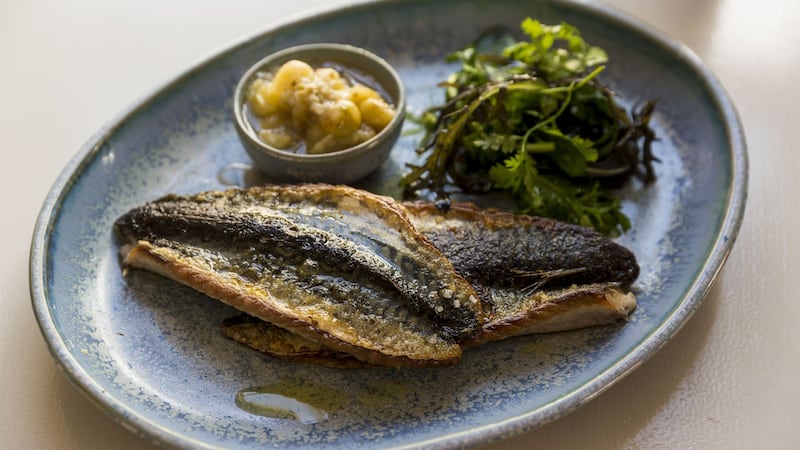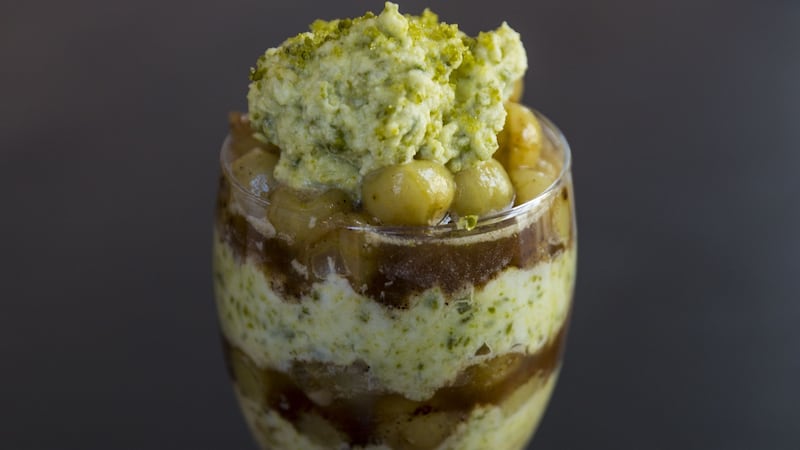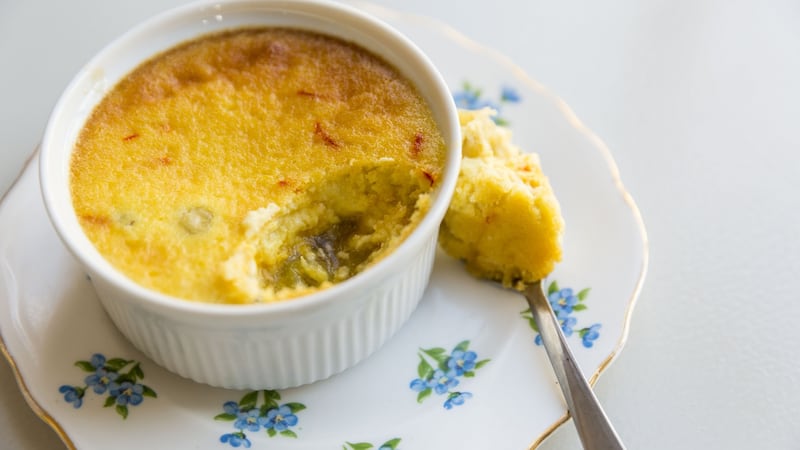I have great nostalgia attached to gooseberries. I grew up eating them fresh from the bushes, in pies and as jam. Gooseberry bushes seemed to be commonplace in most gardens even if the occupants were not keen gardeners.
They were given as gifts with pride especially to city visitors who were heralded with the promises of a tart. They were part of my childhood alongside rhubarb, wild salmon and tart eating apples.
Many gardens still have a few bushes but they are a fruit that never seems to make it to the supermarket shelf and are even a rarity at farmers' markets. The French for gooseberry is groseille à maquereau, translated as "mackerel currants", due to them being served as a sauce for mackerel in old French cuisine but sadly, they're not to be found on today's French menus either.
Gooseberry plants require little care and earn their keep once the wind is kind to them. But it seems that due to their thorny stems and reputation for sourness they have fallen out of favour.
Early pickings, which are of the green variety, are generally hard and sour and more appropriate for cooking. There are later varieties, which are white, yellow and red. These are ideal for dessert, to be eaten raw like strawberries and makes for a seasonal desert served with whipped cream flavoured with a little elderflower cordial.
For me and my family the highlight of running the restaurant has been our relationships with our growers. Shortly after opening Good Things in Durrus we were very fortunate to find a local fruit grower who has provided me with topped and tailed gooseberries for the last 16 years. Shirley, more affectionally known as the gooseberry lady, delivered to us twice a week and her fruit could be found on the menu in all courses.
Today I share my favourite of these nostalgic recipes with you and hope you enjoy them as much as I do.
Pickled gooseberries and red cabbage with smoked mackerel and hazelnuts
This recipe is from the amazing New Zealand chef Peter Gordon who does incredibly clever things with simple ingredients.
If you can manage to get your hands on only one kilo of gooseberries this year, it’s worth pickling them as they will keep for many weeks. Having this pickle in the fridge lends itself to a few quick salads. It works well with blue cheese, a strong, soft goats cheese or smoked mackerel.
For the pickle
1 red cabbage
1kg gooseberries
1l cider vinegar
2l water
1kg brown sugar
8 star anise
4 tsp coriander seeds, crushed
1 cup finely chopped ginger
4 garlic cloves, finely chopped
To serve, for 4 people
4 mackerel fillets, shined and flaked
Toasted hazelnuts with loose skin removed
4 tablespoons horseradish cream
Olive or hazelnut oil to taste
Chopped herbs if available such as dill, coriander or chervil
Salad leaves
1. Slice the red cabbage, removing the thick core, and chop the leaves as finely as you can.
2. Mix with the gooseberries and pack tightly into two preserving jars and place in a sink or bowl as deep as the jars.
3. Pour enough hot water into the sink or bowl to come at least 1/3 of the way up the jars.
4. Put the remaining ingredients into a pot and boil for 2 minutes. Pour into the jars, over the cabbage and gooseberry mixture. The liquid should cover the contents; if it doesn’t, bring some more water and vinegar (at a ratio of 2 to 1) to the boil and top up the jars. Gently wobble the jars to release trapped air, then seal quickly and leave to go cold in the bowl or sink. Put in the fridge and leave for at least a week, turning the jars upside down every two days.
5. To serve, place a large spoon of pickle in the centre of four dinner plates, making sure you get a good mix of gooseberries and cabbage.
6. Scatter the mackerel and hazelnuts around the pickle and spoon the horseradish over it.
7. Drizzle with oil and and finish with leaves on top. Serve with soda bread and butter.

Grilled mackerel with gooseberries
This might seem like an odd combination but I promise you it’s worth trying especially if you are lucky enough to have access to spanking fresh mackerel. They both come into season around the same time and it was a wise person who first put these ingredients together.
Mackerel needs to be eaten as soon as possible after it’s been caught, I find that by the third day it’s gone past it’s best. You can tell by the colour of the flesh, it looses it’s pinkness as it ages. The older it is the less cooking it will need.
Serves 4
500g gooseberries, topped and tailed
50g butter
2 teaspoons sugar
8 medium mackerel fillets
Oil
Salt and pepper
1. Heat the grill to it’s hottest.
2. In the meantime, melt the butter in a saucepan and add the gooseberries and sugar, stir over a gentle heat until the sugar has dissolved. Lower the heat and cover the saucepan and allow to cook for 4-5 minutes until the gooseberries have broken down.
3. Next, oil the fillets well and season with salt and pepper.
4. Place under the hot grill for 3-4 minutes with the skin side facing up. You are aiming to get the skin nice and crisp. There is no need to cook the reverse side as the heat will cook it through.
5. Remove from the grill and serve with the warm compote of gooseberries and a pot of new potatoes, butter and salt.

Gooseberry and coffee compote with pistachio cream
Another clever and simple dish derived from a Peter Gordon recipe. He came up with this dish when his coffee split into a compote of gooseberries. It never fails to surprise.
100g sugar
1 teaspoon ground coffee
200ml water
500g gooseberries
50g pistachio nuts
50g icing sugar
300ml cream, whipped
1. Put the sugar, coffee and water in a pan, bring to the boil and stir to dissolve the sugar.
2. Add the gooseberries, turn the heat down and cook until the first gooseberries burst. Leave to cool.
3. Place the nuts and icing sugar in a food processor and whizz to a fine powder.
4. Whip the cream to a soft peak and mix in the nut powder and spoon on top of the compote. Or layer the cream with the gooseberries in a glass.

Gooseberry and saffron custard
These custards come from Joyce Molyneux. The combination of the tart gooseberries and saffron has a medicinal aroma but is luxurious and indulgent.
Serves 6
225g gooseberries, topped and tailed
Water
50g sugar
6 egg yolks
600ml cream
75g honey
Scant 1/4 teaspoon saffron filaments
1. Boil the kettle and heat the oven to 140oC.
2. Put the gooseberries into a pan with the sugar and 2 tablespoons of water, cover and stew gently for 5 minutes or until just tender. Divide between 6 ramekins.
3. Whisk the egg yolks with the cream, honey and saffron in a heat-proof bowl and place over a saucepan of simmering water, making sure that the base of the bowl doesn’t touch the water. Cook the custard over a low heat for about 10 minutes, stirring until it’s thick enough to coat the back of a spoon.
4. Pour the custard over the gooseberries.
5. Stand the ramekins in a roasting tin filled with warm water (from the kettle) to a depth of 2.5 cm/1 inch.
6. Bake in the preheated oven for 45 minutes to 1 hour or until just set.
7. Best served warm or at room temperature.










